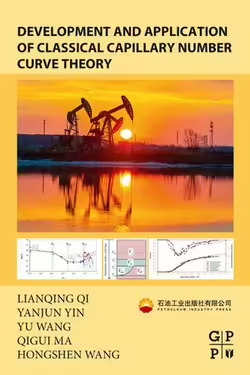Development and Application of Classical Capillary Curve Theory shows readers how to improve chemical flooding recovery procedures in enhanced oil recovery (EOR) using sophisticated numerical modeling techniques for oil displacement that build on, and enhance, the accepted capillary curve in a novel way. The title presents research and technical data that amends the classical capillary curve, giving new impetus to chemical flooding research. By analyzing the capillary number experiment QL, the book models oil and water distribution in the micro-space of the reservoir core. Finally, the book discusses chemical flooding software, reservoir geological modeling, field tests, and a new technique of digital oil displacement testing being developed. - Describes how to improve chemical flooding recovery procedures using sophisticated numerical modeling techniques for oil displacement that build on, and enhance, accepted capillary curve theory - Presents the role of the capillary number experiment curve QL on oil-water distribution in the microscopic core of a reservoir - Details novel digital techniques for oil displacement testing and modeling with global applicability in enhanced oil recovery (EOR) - Gives information on chemical flooding software, reservoir geological modeling and field testing - Provides advanced digital modeling techniques alongside insights gained through many years of practical experience in Chinese oilfields



Share This eBook: